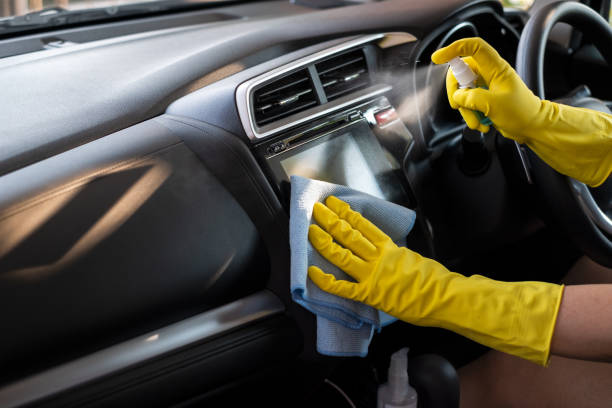Bug splats can be an issue if you frequently travel long distances or live in a bug-infested area. With their acidity, they can cause paint damage, become stuck on your car’s paint, and even obstruct your view of the windshield and windows while driving.
To avoid further damage, they should be cleaned as soon as possible. WD40 is an effective solution for bug splats on your car. This article will show you how to clean bugs off your car with WD40.
Essentially, it would entail spraying and wiping affected areas with WD40. However, there are additional steps you must take both before and after the event. Continue reading to learn all of the steps, as well as an additional tip for reducing bug splats.
How to Clean Bugs Off Car
Here are five methods for removing bugs from your car:
Work in the low-blast industry.
When cleaning insects from your car, go slowly and gently. To remove bugs from your vehicle, avoid using a pressure washer. Instead, before beginning your wash, soak your vehicle in a low-pressure rinse. This reduces the possibility of exterior damage to your vehicle.
Consider Micro.
It’s critical to use the right kind of cloth to wash off the bugs to avoid scratches. Even something as simple as a terry cloth can be too abrasive and damage the paint on your vehicle.
If you want to be safe, buy some microfiber clothes and use them to clean your car. They will not cause scratches and will not leave much lint behind.
Select your weapon.
Before you begin, you must decide which product to use to remove the splattered bugs. While specialty bug-remover products are available, they are typically overpriced and will not necessarily perform any better than most household products.
To keep things as simple as possible, combine water and dish detergent in a spray bottle and apply it to your vehicle. For some people, this may work better than more expensive products.
Wax On
Once you’ve removed all of the bugs from your vehicle, it’s critical to apply a car wax solution to prevent future problems. A good coat of wax will form a barrier between the bugs and your car’s paint, making them easier to remove in the future.
It’s ultimately up to you, but it’s recommended that you spend a little more money on a high-quality wax. If you settle for a less expensive one, you’ll probably wonder why you wasted so much time applying it in the first place.
Bug Collecting
Despite their unsightly appearance, most people wait weeks before cleaning their car of dead insects. While this may appear to be harmless, bug splatter is acidic and can damage your car’s paint. This is especially true for darker vehicles, which attract more heat during the hot summer months.
Make it a habit to remove any bugs at least once a week to avoid long-term damage.
Conclusion: Getting Bugs Off Your Car
To avoid paint damage, remove bugs as asap.
When bugs land on your car’s front bumper, grill, and mirror backs—the most common landing areas, along with the windshield—and aren’t cleaned up right away, problems can arise. Bug splatter is acidic and will leave pockmarks on your car’s paint. Furthermore, bacteria grows on the dead bugs, which eats away at your car.
When you factor in summer heat, you’ve got an even bigger, baked-on problem. According to Chuck Brosz, managing partner of White Rock Car Bath in Texas, this is when dark vehicles are especially vulnerable to permanent damage. “Darker cars generate more surface heat, which leads to blistering and the appearance of imperfections as white spots,” he says.
During bug season, clean your car frequently.
A good starting point? Wash your car every two weeks and make bug removal a priority, especially after a few days on the highway. “The car should be washed as soon as possible after a road trip,” says Brosz. “The key is how long the bugs are left on the vehicle. Extreme weather only makes matters worse—the higher the temperatures, the more likely damage will occur.”
He recommends waxing your car once a year to protect the finish, but this does not prevent bug-juice damage. “Wax can help a little,” he says. “It makes washing the car easier. But if it’s August and it’s 110 degrees, and you leave the bugs on for a week, that wax won’t keep them from damaging the finish.”
The most effective ways to remove bugs from a car or truck
A quick trip through the drive-through car wash will remove some of the bugs, and hand-held pressure sprayers can also be useful. But, according to Brosz, the best way to remove them all is with a bucket of water and a microfiber cloth—terry cloth can be too abrasive on darker cars.
Try this DIY prewash treatment for the nastiest dried-on pests: Spritz with a spray bottle filled with water and a few drops of dish detergent. There are also specialized bug-removal solutions available. “There isn’t a product that I can put on and the bugs just magically disappear,” Brosz says. “There is always some labor and attention to detail, and easy does it.”



